The network device called a 16-port Full Gigabit Layer 3 Managed Power over Ethernet (PoE) switch provides power and data distribution to many devices via one Ethernet cable. Such switches have sixteen gigabit Ethernet ports, ensuring high-speed data transfer and connectivity. The “Layer 3” term means that this switch can route IP between different networks or VLANs, thus improving the efficiency and scalability of large, complex network environments. Managed switches come with advanced services such as Quality of Service (QoS), security mechanisms, network management protocols, etc., making them suitable for enterprise, data center, and campus network deployments. With PoE capability enabled, these switches can supply the electric energy required by devices like IP cameras, VoIP phones, wireless access points, etc., thus simplifying the installation process while reducing the need for separate power supplies.
Table of Contents
ToggleWhat is a 16-port Full Gigabit L3 Managed PoE Switch?

Features of a Layer 3 Switch
- Advanced Routing Features: Layer 3 switches have inbuilt routing capabilities to handle inter-VLAN routing more effectively and streamline data traffic between various network segments.
- High-Speed Data Transfer: These switches guarantee quick and reliable delivery of information with their full gigabit ports which can cater for heavy-duty applications by minimizing delays through supporting high bandwidths.
- Quality of Service (QoS): It prioritizes voice and video communications, among other important tasks, over a network, thus preventing congestion and improving user experience.
- Security Mechanisms: To prevent sensitive data from being accessed by unauthorized persons, the layer three switch offers strong security measures, such as ACLs, network segmentation, and encryption.
- Scalability and Flexibility: These two qualities are supported by the ability of these devices to work on different topologies without any problem; furthermore they can also adapt themselves easily when required in large or complicated networks where many devices need connection points.
- Power Over Ethernet (PoE) Support: This feature helps save time during installation by eliminating the need for power adapters for each device connected through an Ethernet cable, such as IP cameras, VoIP phones, or wireless access points.
- Network Management Protocols: Managed Layer 3 switches support multiple protocols used in managing networks, like SNMP, RMON, or NetFlow. These protocols aid administrators greatly when monitoring resources within their purview, making it easier to track what is happening across their systems at any given time.
- Redundancy And Reliability: There should be no single point failure because if there is, then some parts will not be working; hence, Link aggregation should be done so that all can work together; spanning tree protocol enables one path blocking while allowing another link backup when necessary also failover support must always guarantee continuous operation even during downtime.
Main Benefits of Managed Switches
Managed switches have lots of benefits for network administration and performance. Here are some of them:
- More control and more customization: Managed switches allow you to take charge of your network like never before, with settings configurations, traffic management abilities, and the capacity to make individualized policies based on what your organization needs most; fine-tuning this way improves overall efficiency in network performance.
- Enhanced Network Performance: This can be achieved by making sure that important data gets where it’s supposed to go as quickly as possible – QoS(Quality Of Service), VLANs (Virtual Local Area Networks) which separate traffic types into different broadcast domains so they don’t interfere with each other unnecessarily all contribute towards saving time during communication within a given network; time saved means better working relationship between devices connected through said network thus leading to smooth running of such applications that consume much bandwidth like VoIP or streaming services.
- More Security: Access control lists (ACLs), Network segmentation, and Strong encryption are just a few words used to describe managed switch security features. Unauthorized access prevention, a top priority among others, aims to shield sensitive information from falling into the wrong hands while logging all activities carried out over a particular network, providing an additional layer(s) of safety measures.
Why Choose a 16-Port Configuration?
Selecting a 16-port setup balances scalability, efficiency, and affordability, thereby suiting small to medium-sized businesses (SMBs) and network environments. This particular setting has sufficient ports for connecting multiple devices without the need to deal with numerous complex features or incur high costs associated with higher port counts. On top of that, if one decides to use a 16-port switch while their business continues growing, this device will still be relevant because it does not require immediate additional hardware apart from allowing more connections. It is worth mentioning that such switches often come with advanced functions like support of Virtual LANs (VLANs), Quality of Service (QoS), and security enhancements, hence ensuring strong network management and performance. Moreover, these switches are usually easy to install and configure, thus making them an excellent choice for IT personnel who want dependable yet flexible networking solutions that can be scaled up easily if required later on.
How Does a Layer 3 Ethernet Switch Work?
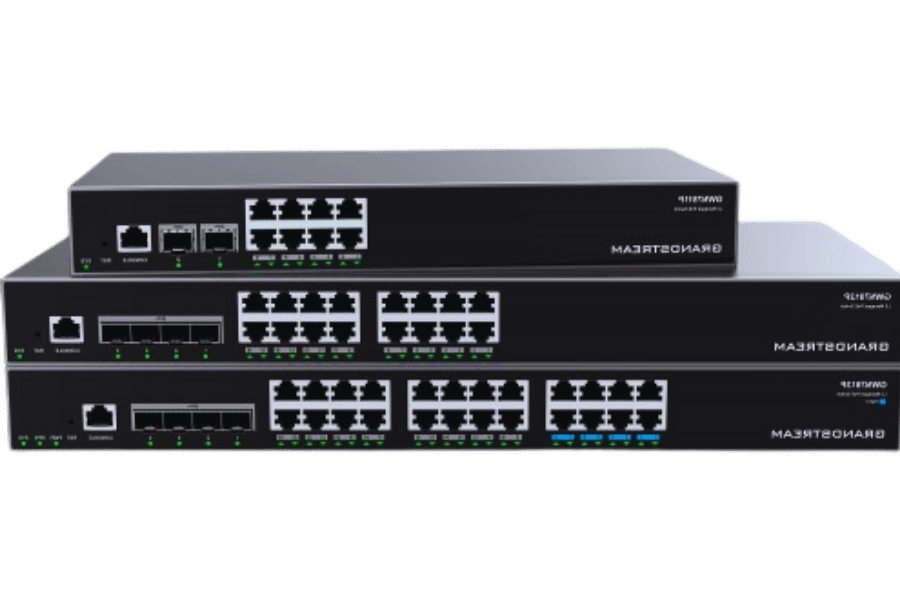
The Role of Gigabit Speed
In modern networking, gigabit speed is an essential element because it dramatically increases the speed at which data is transferred, thus improving the overall performance of networks. Networks can reach up to 1 gigabit per second (Gbps) with Gigabit Ethernet, which facilitates handling of high bandwidth applications such as HD video streaming, making voice over IP calls, or transferring large files. This faster rate also guarantees low delay times and less lag; therefore, devices and services connected through it operate more smoothly and efficiently. Furthermore, this velocity supports easy expansion so that additional devices may be added without affecting performance due to increased data loads, which can now be accommodated by larger capacity networks without problems thanks to gigabit speeds. Businesses needing fast and reliable connection for mission-critical systems, among other places, will benefit most from using gigabit Ethernet since they demand high speeds under such circumstances while also allowing scalability when necessary.
Understanding VLAN and Its Importance
Virtual Local Area Networks (VLANs) are an essential part of contemporary network design for their increased flexibility, security, and manageability. They enable network administrators to divide a physical network into several logical networks with separate broadcast domains. To do this, Ethernet frames are labeled using a VLAN ID, which ensures proper separation and routing of traffic within the network.
Main Technical Parameters of VLANs:
- VLAN Identifier: Each VLAN is assigned a number between 1 and 4094 that distinguishes it from others.
- 802.1Q Tagging: This standard defines a 32-bit tag inserted into Ethernet frames to indicate membership in a specific VLAN. It has fields for priority, VLAN ID, etc.
- Inter-VLAN Routing: Inter-VLAN routing allows communication between different VLANs while keeping them logically apart; Layer 3 switches or routers carry it out.
- Quality of Service (QoS): By setting up QoS on specific VLANs, one can prioritize selected types of traffic, thus ensuring that critical services such as VoIP get enough bandwidth and have low latency.
Significance of VLANs:
- Better Security: Sensitive data systems can be isolated on their own VLANS, therefore limiting unauthorized entry and reducing risks associated with cyber-attacks or any other form of security breach.
- Improved Network Performance: With each broadcast confined within its own virtual LAN unnecessary packets are minimized leading to lighter loads on networks altogether saving bandwidth resources needed for transmission across these same networks.
- Ease in Administration: Logical configuration rather than physical re-cabling facilitates quick adaptation during device addition/configuration changes within segments under consideration without affecting wider physical infrastructure adjustments required outside those areas being worked upon directly. Accordingly, voice-over-internet protocol devices may reside on different VLANs without having any impact at all on other parts or points within the entire enterprise environment where even pbx/server could be situated as well.
Scalability—A key benefit of using VLANS is scalability; this allows networks to grow by accommodating new hosts without necessitating major reconfigurations of the existing addressing or routing schemes.
What is the Function of SFP Ports?
Small Form-Factor Pluggable (SFP) ports are interfaces on devices like switches, network interface cards, and routers supporting module hot-swappable transceivers. These transceivers enable different media types and speeds to be used in a network, allowing flexible network configurations. Below are some key functions:
- The flexibility of the Media: These ports can take different transceivers to connect fiber optic or copper cables, thus making it easy to upgrade or change the network media without replacing the whole equipment.
- Scalability: Network expansion and upgrading becomes possible with minimal disruption as these ports support various SFP transceiver types.
- High-Speed Data Transmission: SFP modules are designed for short-distance and long-distance networking because they support data rates from 100 Mbps up to 4 Gbps.
- Hot-Swap Capability: By swapping out SFP transceivers without powering down equipment, maintenance is simplified, and network uptime is preserved.
Therefore, small form-factor pluggable ports offer an adaptable solution for high-performance network infrastructure that can cater to changing networking requirements without requiring substantial hardware modifications.
Why Opt for an Industrial 16-Port Managed PoE Switch?
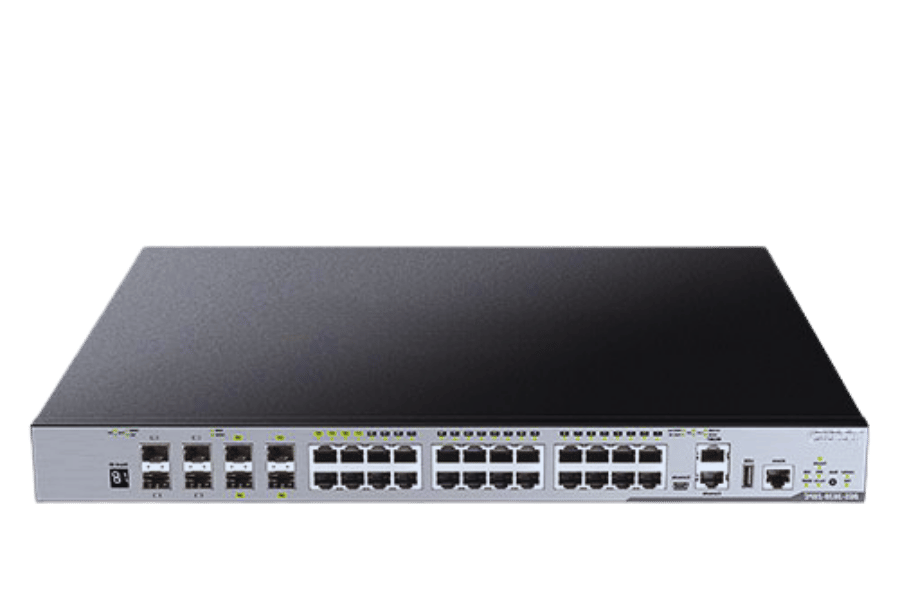
Durability and Reliability Factors
When buying an industrial Power over Ethernet (PoE) switch with 16 ports, there are several things you need to consider in terms of reliability and durability. To begin with, such switches are made in a way that they can withstand severe environmental conditions, which may include extreme temperatures, humidity levels, and vibration frequencies, hence ensuring continuous operation under industry-based environments. They have high-quality parts and tough enclosures that protect inner circuitry against dust particles, water droplets, or any other form of electromagnetic distortion, thus making them even more long-lasting than before. Additionally, these types of Industrial PoE Switches come along with redundant power inputs plus failover capabilities so as to ensure continuity in network connection regardless of power supply interruptions. The last thing is that advanced cooling systems for heat dissipation and improved thermal management help prevent overheating, which could lead to device failure during extended working hours. All these features, therefore, make this product strong enough for networking purposes while meeting tough industrial demands.
Power Over Ethernet (PoE) Capabilities
Power over Ethernet (PoE) capabilities can significantly make network installations more flexible and scalable as they deliver data and electric power through a single Ethernet cable. This makes it easier to deploy IP cameras, wireless access points, and VoIP phones, among other devices, thus doing away with the need for separate power supplies, leading to reduced installation costs. Different device requirements can be met with varying power levels offered by PoE switches, which include IEEE 802.3af(PoE), 802.3at(PoE+), and the latest 802.3bt(PoE++) standards, which provide even up to 60W or 100W per port. Moreover, advanced features in PoE management, like real-time monitoring of power consumption, power scheduling, and power prioritization, ensure energy is used efficiently, thereby improving overall network performance. Therefore, these abilities make them suitable for various environments as they are multipurpose and cheap ways of powering devices connected to networks managed by PoE switches.
Advantages of an Industrial Managed Switch
Complex network environments may benefit from industrial-managed switches. Industrial-managed switches provide many advantages for complex networks. One advantage is that they ensure network reliability and redundancy, which are better than those of other kinds of switches. They achieve this through the use of Spanning Tree Protocols (STP), Rapid Spanning Tree Protocols (RSTP), and Multiple Spanning Tree Protocols (MSTP). With these protocols, data can be re-routed efficiently in case there is a failure in one part of the network, hence reducing downtime. In addition to that, they also support strong security measures such as 802.1x authentication, Access Control Lists (ACLs), and encryption, among others. This is necessary because unauthorized persons should not be allowed into any system, especially when dealing with large industrial organizations like factories where machines could easily get damaged or even lost due to cyber-attacks originating from within or without the organization’s premises.
Moreover, flexibility in terms of management cannot go unnoticed either since it allows things like real-time monitoring, diagnostics, as well as remote configuration via Simple Network Management Protocol (SNMP) and web-based interfaces too, which are supported by these switches, unlike unmanaged ones, which lack such capabilities altogether. Furthermore, its construction durability withstands harsh conditions ever encountered within industries, therefore making this device very reliable even under extreme temperatures where ordinary devices fail. This proves vital during demanding industrial deployments because they enhance efficiency while at the same time securing uptime with them around networks never suffer.
What Are the Key Applications of a 16-Port L3 PoE Switch?
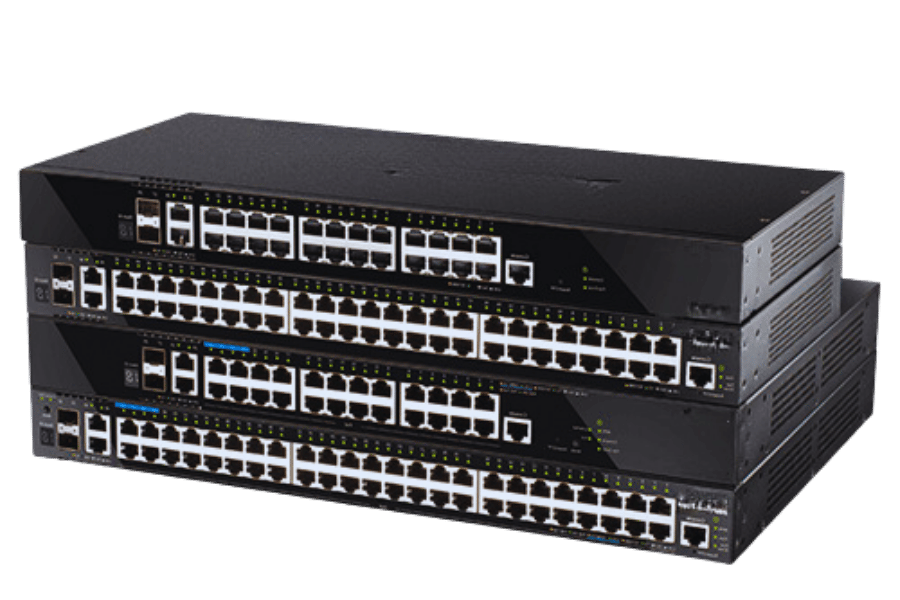
Uses in Enterprise Networks
An L3 PoE switch with 16 ports can be a valuable asset for enterprise networks as it can support high-bandwidth applications and centralized power management. Initially, this device simplifies deploying wireless access points, VoIP phones, and IP cameras by providing data and power over one Ethernet cable, which decreases cable clutter and installation costs. Secondly, it also offers L3 routing, which enables efficient inter-VLAN routing, thus improving network segmentation and enhancing overall performance and the security of the organization’s systems against attacks from within or outside their environment. Moreover, advanced QoS features guarantee the allocation of prioritized bandwidth to critical applications like video conferencing, which facilitate the smooth running of vital business operations that require real-time analysis, such as big data processing in enterprises dealing with large volumes. In general terms, then, what can we say about these switches? They are flexible solutions that meet most of the requirements set by the modern corporate world while remaining affordable at only $1000 per unit.
Roles in Data Centers
A 16 port L3 PoE switch is vital in optimizing network performance and improving infrastructure scalability within data centers. Firstly, this permits a smooth connection with other crucial network devices, such as servers and storage arrays, among other switches. Such kind ensures that fast interconnectivity is achieved, leading to high-speed data transfer; thus, no or less delays are experienced during the processing of a considerable volume of information. Secondly, it can power devices over Ethernet, which means there will be no need for extra electrical wiring, thus streamlining IT infrastructure and reducing operational costs. Moreover, its Layer 3 feature supports advanced routing protocols that help manage traffic effectively and segment networks, which are essential for the security enhancement and optimization of DC’s service delivery. Last but not least, strong built quality plus extended lifespan makes this device suitable for use in harsh environments where reliability matters most, guaranteeing business continuity even when things seem not working out fine at all times in our beloved data centers.
Applications in Smart Buildings
Smart buildings can be equipped with a 16-port L3 PoE switch which allows for the combination of various IoT devices and intelligent systems required by modern infrastructure. Primarily, these switches ensure reliable and fast connection to sensors, cameras, and control systems, among others, thus supporting building automation systems that oversee efficient monitoring and management of lighting, heating, ventilation, and air conditioning (HVAC). Secondly, with IP cameras or access control points, etc., there is no need for an extra power supply as it provides Power over Ethernet capability, thereby simplifying installation processes while improving energy efficiency levels within such establishments. Last but not least important is its advanced routing features coupled with network segmentation facilities, which enhance security in terms of data protection against unauthorized access through robust measures availed by L3 switches. This implies that without connectivity being sacrificed at the altar power saving mode, a single device like this can secure an entire floor from top to bottom, even up into space outside Earth’s atmosphere where nobody else has gone except astronauts a few times every year according to popular industry websites today too which may have changed their content since then and will again in future too because things always change over time.
How to Set Up and Manage a Gigabit L3 Managed Switch?
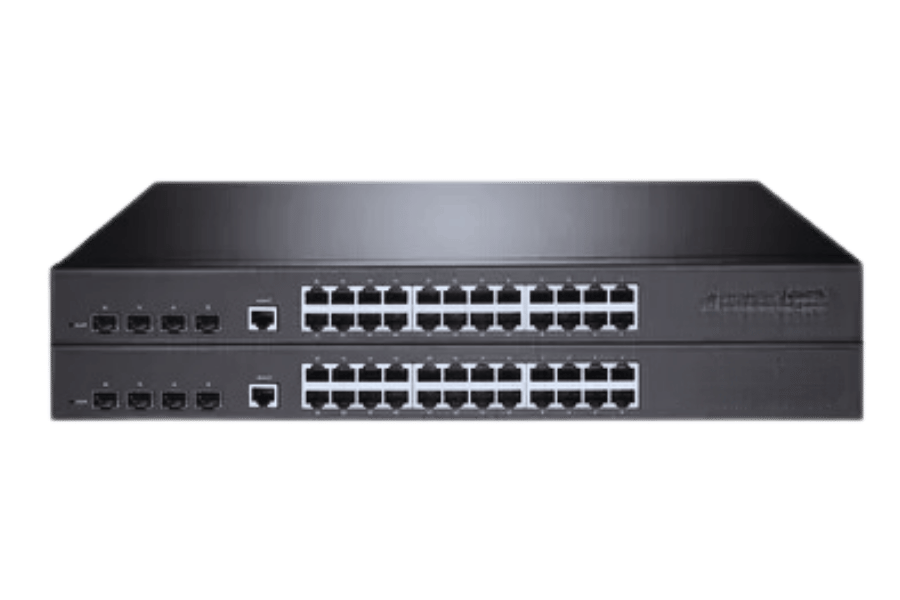
Initial Configuration Steps
- Open it and check for any missing or damaged parts.
- To supply power to the Switch and connect it to the network, Insert the power adaptor into its socket, then use an Ethernet cable to plug in one end of the switch while connecting the other end with your existing network infrastructure.
- Accessing the Web Interface of a Switch is very simple: Connect a computer through any port of this device, open an internet browser, and type in the default IP address of a switch (usually found on the user manual or manufacturer’s website).
- Logging into a Switch is necessary before you can change its settings. After a successful connection between the PC and device has been made, enter the username/password combination given by the manufacturer at the login prompt.
- Walk through the initial setup wizard: This will take care of essential configuration, such as setting an IP address, subnet mask, and gateway. Also, an administrator password change should be carried out to improve security measures.
- Depending on the network topology design requirements, setting up VLANs and routing protocols might be needed. You can create virtual LANs according to your needs and configure routing protocols suitable for your network environment.
- Power over Ethernet ports enablement: You must decide which port(s) need(to provide PoE functionality and power budget allocation management.
- Updating firmware regularly ensures the latest functionality updates are installed and fixes vulnerabilities exploited by hackers.: Check the most recent version available from time to time then install it immediately after that so that advanced features plus security enhancements become part of this switch’s capabilities suite
- Save Configuration Changes & Backup Settings File To Avoid Any Loss Of Data In Case Of Failure Or Misconfiguration Occur During Troubleshooting Stage
Monitor Everything In Order To Maintain Control Over Network Traffic Flow And Performance Levels: Make good use of all provided management tools offered by these switches, including performance monitoring ones.
Using SNMP for Remote Management
SNMP (Simple Network Management Protocol) is a powerful tool for overseeing network devices remotely, like Gigabit L3 Managed Switches. According to the most reputable sources in this industry, there are several key benefits that come with implementing SNMP:
- Remote Monitoring and Configuration—Using SNMP, IT admins can monitor system health, network performance, and bandwidth usage from any location. This gives them immediate access to critical information like traffic patterns, port status, or error rates. It also allows administrators to configure settings on a network without having physical contact with the switch, thus making their operations efficient.
- Automated Alerts & Notifications—This feature of SNMP allows you to set thresholds and triggers that will automatically alert an administrator about possible problems. For example, if the traffic on one port exceeds its limit, an immediate attention alarm could be raised. Such a proactive approach helps in the quick identification and resolution of network issues, thereby minimizing downtime.
- Scalability & Customization—SNMP supports various devices and can easily grow with expanding network requirements. Its flexibility allows for customizing monitoring parameters while integrating with different NMSs (Network Management Systems). This means that SNMP is compatible enough to be tailored to specific organizational needs and accommodate future changes in the size of a given network.
By adopting SNMP for remote management you improve visibility, control reliability on your network infrastructure which leads to better performance coupled with lower maintenance overheads.
Software and Firmware Updates
Optimal performance and security of L3 managed switches require that their software and firmware be regularly updated. These updates are usually patches for vulnerabilities, improvements on existing features, and support for new protocols or standards. For instance, keeping the firmware current ensures that the network devices can interact properly with the latest hardware and software technologies.
In addition, bugs may be fixed while enhancing the general stability of your network infrastructure, which will reduce the chances of outages or performance bottlenecks. Most modern switches have automated updating mechanisms so that they always run on current versions without much manual intervention, thus saving time, too.
Giving priority to software updates, together with those of other firmwares around it, ensures my network is safe from threats such as viruses and also makes it more reliable because any system should be able to work well under any circumstances, including future advancements in technology.
Reference sources
Frequently Asked Questions (FAQs)
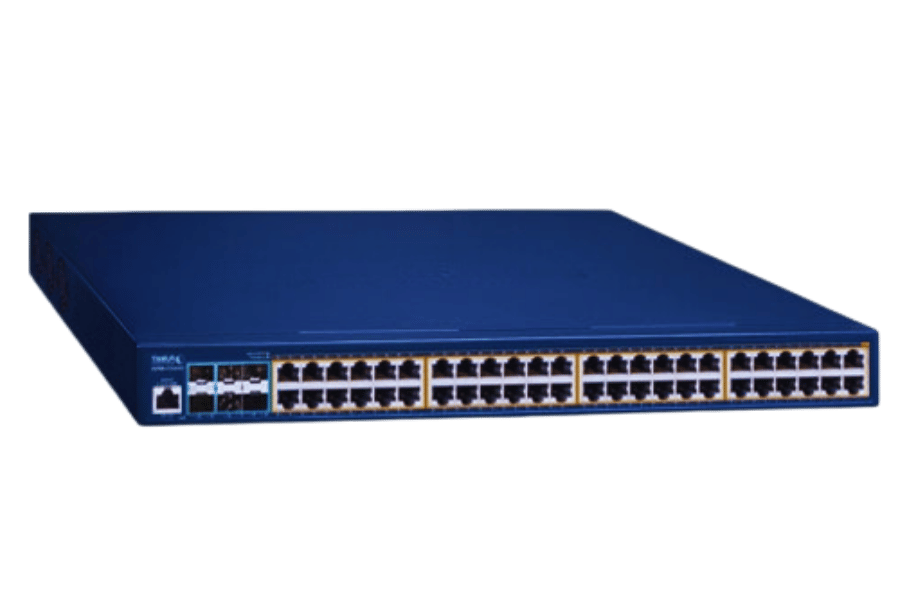
Q: What is an industrial 16-port full gigabit L3 managed ethernet switch?
A: An industrial Ethernet switch that manages 16 ports at the L3 level within a gigabit is a high-performance network switch for industrial use. It has features such as QoS, Layer 3 management, and redundant power supply. It also has these features because it contains 16 Ethernet ports with up to one gigabyte per second.
Q: What are the benefits of a managed ethernet switch?
A: Managed ethernet switches allow more security functions on networks, better control over traffic flows, and improved overall performance. Management protocols can be used for settings like QoS, VLANs, and IGMP snooping. Ring protection on the ethernet, redundant power supplies, or other similar features can also increase network reliability.
Q: What is the importance of 802.3at PoE in an industrial ethernet switch?
A: This type of device’s adoption of the IEEE 802.3at standard enables every port to have Power over Ethernet capability, which means that each one can deliver up to thirty watts needed by various devices like IP cameras, VoIP phones, or wireless access points directly through its connected cable without external power supply units, thus reducing costs associated with installation complexity as well.
Q: How does a layer 3 managed ethernet switch differ from a layer two switch?
A: While basic network switching is performed on both types of devices described above, only L3 switches have routing capabilities between different virtual LANs (VLAN), which allows them to manage traffic more effectively than L2 switches, which operate mainly at the data link layer (OSI model) and can only direct packets between hosts within the same broadcast domain.
Q: What is Quality of Service’s (QoS) role in a managed PoE switch?
A: To ensure that critical applications always receive the desired bandwidth necessary for their operation, QoS prioritizes certain types or classes of traffic over others. For example, voice and video can be given higher priority than data packets to improve user experience when using managed PoE switches.
Q: What types of power supply options are available for industrial Ethernet switches?
A: Industrial Ethernet switches have backup or dual power supplies to keep functioning continuously even if one power source fails. These can be powered using AC or DC power supplies, which makes them versatile for different industry environments.
Q: What are the features of a 16-port gigabit Ethernet switch(Layer3 managed)?
A: These switches have 16 ports that support 1Gbps data rates per port. They also come with advanced layer three management capabilities,802.3at PoE(for IP cameras), IGMP snooping, and QoS. They additionally support ERPS(Ethernet Ring Protection Switching), redundant power, and a lifetime warranty.
Q: How does Ethernet Ring Protection Switching (ERPS) benefit an industrial network?
A: IT follows the G.8032 standard to ensure reliable and resilient network connections for industrial applications where it is applied. It provides continuous uptime by offering fast recovery when links fail, minimizing downtime.
Q: What is the typical PoE budget for an industrial 16-port full gigabit L3 managed PoE switch?
A: Typically, the POE budget refers to how much total power can be delivered over all POE ports on a given device.The budget should not be confused with maximum output capability because some devices may provide less than their rated amount due to temperature or cable length. An industrial 16-port full gigabit L3 managed PoE switch usually has high power budgets up to and exceeding 400 watts to drive multiple high-powered devices concurrently.
Recommend reading: Layer 3 Switch vs. Router
